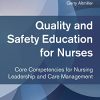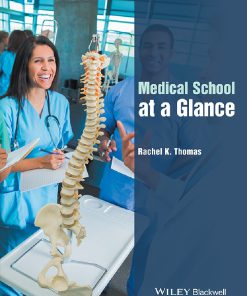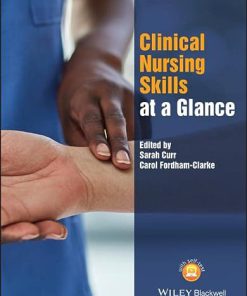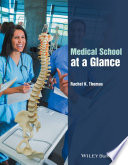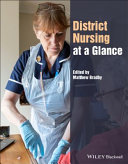Medical Surgical Nursing at a Glance 1st Edition by Ian Peate ISBN 9781118902653 1118902653
$50.00 Original price was: $50.00.$25.00Current price is: $25.00.
Medical Surgical Nursing at a Glance 1st Edition by Ian Peate – Ebook PDF Instant Download/Delivery: 9781118902653 ,1118902653
Full download Medical Surgical Nursing at a Glance 1st Edition after payment
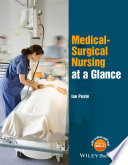
Product details:
ISBN 10: 1118902653
ISBN 13: 9781118902653
Author: Ian Peate
Medical Surgical Nursing at a Glance 1st Edition Table of contents:
Part 1 Nursing practice
1 What is Nursing?
Figure 1.1 Three definitions of nursing
Figure 1.2 Some elements associated with the role of the nurse
Defining nursing
The function of the nurse
Care giver
Communicator
Advocate
Teacher/health promoter
Change agent
Leader and manager
Researcher
The changing role of the nurse
2 The 6 Cs
Figure 2.1 The 6 Cs of nursing.
Compassion in practice
The 6 Cs
Care
Compassion
Competence
Communication
Courage
Commitment
Areas of action
3 Accountability and Responsibility
Table 3.1 The purpose of the Code
Table 3.2 The key facets of the Code
Figure 3.1 Four spheres of accountability
Statutory regulation
Nursing and Midwifery Council
The Code of Professional Conduct
Accountability
Public accountability
Accountability to the patient
Employer accountability
Accountability to the profession
4 Risk and Safety
Table 4.1 Resources available to help nurses manage risk and enhance patient safety
Table 4.2 An example of a Modified Early Warning System (there are various systems available)
Resources
Risk assessment tools
Early warning systems
Surgical safety checklist
5 Patient-Centred Care
Figure 5.1 Some components of patient-centred care
Table 5.1 Types of patient-centred care
Patient-centredness
Partnership working
Fundamental needs
People first
Working with others
6 Team Working
Table 6.1 Features of a team
Figure 6.1 Characteristics of an effective team
Principles underpinning team work
Characteristics of teams
Team values
Honesty
Discipline
Creativity
Humility
Curiosity
Barriers to effective team working
Conflict
Part 2 General care
7 Health Assessment
Figure 7.1 The nursing process
Table 7.1 Some assessment techniques
Figure 7.2 Abdominal palpation
Table 7.2 The SMART approach to goal setting
Health
Assessing needs
Health history
A systematic approach to care: the nursing process
Assessment
Nursing diagnosis
Planning
Implementation
Evaluation
8 Intravenous Therapy
Table 8.1 Types of vascular access device (VAD). These can be inserted peripherally or centrally
Figure 8.1 Intramuscular, intravenous and subcutaneous injections
Vascular access devices
The principles of care
Potential complications
Care issues
Fluid balance
9 Blood Transfusion
Figure 9.1 Blood groups
Figure 9.2 Barcodes used to reduce risk
The blood
Blood types
Alternatives to blood transfusion
Autologous blood
Need for transfusion
Transfusion safety
Fluid overload
Reducing transfusion errors
10 Nutrition
Figure 10.1 Chemical degradation
Figure 10.2 The eatwell plate
Table 10.1 Basic information required to make an assessment of nutritional needs
The role of the nurse
Malnutrition
Assessment
Assessment tools
Nutrients
The eatwell plate
11 Pain
Figure 11.1 Chronic pain
Table 11.1 Factors influencing pain
Table 11.2 The main changes associated with chronic pain
Figure 11.2 The analgesic ladder
Table 11.3 Routes of administration for analgesics
Pain receptors
Factors influencing pain
Types of pain
Acute pain
Chronic pain
Location of pain
Assessment of pain
Pain scales
Pain management
Pharmacological interventions
Non-pharmacological interventions
12 Infection Prevention and Control: I
Figure 12.1 The chain of infection
Figure 12.2 Five moments of hand washing
Figure 12.3 Hand washing technique
Table 12.1 The modes of transmission
Healthcare-associated infections
Hand hygiene
Transmission of infection
13 Infection Prevention and Control: II
Table 13.1 The modes of transmission
Table 13.2 The principles underpinning asepsis
Modes of transmission
Methods of reducing the spread of infection
Standard Precautions
Transmission-based precautions
Personal protective equipment
Sharps
Waste disposal
Spillage
Asepsis and aseptic technique
Indwelling devices
Part 3 Medical nursing
Immune system
14 HIV
Table 14.1 The signs and symptoms of late HIV
Figure 14.1 The main symptoms of acute HIV
Table 14.2 Risk factors associated with HIV
Human immunodeficiency virus
HIV risk factors
Signs and symptoms of HIV
Early stage
Late stage
HIV testing
Treatment
Postexposure prophylaxis
HIV prevention
Pre-exposure prophylaxis
15 Systemic Lupus Erythematosus
Figure 15.1 A range of symptoms associated with SLE
Table 15.1 SLE general manifestations
Table 15.2 A person may be classified as having lupus if 4 or more of the 11 criteria below are present
Systemic lupus erythematosus
Risk factors
Signs and symptoms
Investigations and diagnosis
Management and care
16 Irritable Bowel Syndrome
Figure 16.1 Irritable bowel syndrome
Figure 16.2 Areas of spasm associated with irritable bowel syndrome
Figure 16.3 Some signs and symptoms of irritable bowel syndrome
Signs and symptoms
Investigations and diagnosis
Care and management
Pharmacological and psychological interventions
Respiratory system
17 Asthma
Figure 17.1 Changes in the airways from asthma
Table 17.1 Key nursing actions
Table 17.2 Overview of bronchodilator therapies used for asthma
Causes of asthma
Signs and symptoms of acute asthma
Investigations and diagnosis
Care and management
Aftercare
18 Pulmonary Embolism
Figure 18.1 Pulmonary embolism
Table 18.1 Risk factors associated with pulmonary embolism
Table 18.2 Tests used in making a diagnosis of pulmonary embolism
Causes of pulmonary embolism
Signs and symptoms of pulmonary embolism
Investigations and diagnosis
Care and management
19 Pneumonia
Figure 19.1 Signs and symptoms of pneumonia (main symptoms in bold)
Signs and symptoms
Investigations and diagnosis
Care and management
Prevention
Haematology
20 Iron Deficiency Anaemia
Table 20.1 Classifications of anaemia
Figure 20.1 Signs and symptoms of IDA
Table 20.2 Other possible investigations needed to confirm the cause of IDA
Iron deficiency anaemia
Signs and symptoms
Investigations and diagnosis
Care and management
21 Thrombocytopenia
Figure 21.1 Components of platelet plug formation
Figure 21.2 Blood clot
Thrombocytopenia
Causes of thrombocytopenia
Signs and symptoms
Investigations and diagnosis
Care and management
22 Leukaemia
Figure 22.1 Signs and symptoms of leukaemia
Table 22.1 Four general classifications of leukaemia
Table 22.2 Investigations and tests
Table 22.3 Key nursing considerations
Leukaemia
Risk factors for leukaemia
Signs and symptoms
Investigations and diagnosis
Care and management
Cardiovascular system
23 Myocardial Infarction
Figure 23.1 Signs and symptoms of acute myocardial infarction (women)
Figure 23.2 Typical distribution of referred pain
Table 23.1 The PQRST mnemonic for assessing chest pain
Myocardial infarction
Signs and symptoms
Investigations and diagnosis
Care and management
24 Heart Failure
Figure 24.1 Signs and symptoms of heart failure
Table 24.1 Categories of heart failure
Table 24.2 Severity of heart failure – New York Heart Association (NYHA) Functional Classification
Heart failure
Causes of heart failure
Signs and symptoms (Figure 24.1)
Investigations and diagnosis
Care and management
25 Angina
Table 25.1 Types of angina
Table 25.2 Severity of angina graded by the degree to which the condition limits activities
Figure 25.1 Angina
Figure 25.2 Insertion of stent to improve cardiac blood flow
Signs and symptoms
Investigations and diagnosis
Care and management
Health promotion
Neurological system
26 Meningitis
Figure 26.1 Signs and symptoms of meningitis
Figure 26.2 Lumbar puncture
Meningococcal disease
Bacterial meningitis
Viral meningitis
Investigations and diagnosis
27 Subarachnoid Haemorrhage
Figure 27.1 Subarachnoid haemorrhage
Table 27.1 Some neurological deficits associated with brain injury
Subarachnoid haemorrhage
Risk factors associated with subarachnoid haemorrhage
Signs and symptoms
Investigations and diagnosis
Care and management
28 Epilepsy
Table 28.1 Generalised seizures: descriptions
Epilepsy
Signs and symptoms
Classification of epilepsy
Focal or partial seizures
Generalised seizures
Status epilepticus
Non-epileptic seizures
Investigations and diagnosis
Treatment and care
Gastrointestinal system
29 Gastro-oesophageal Reflux Disease
Figure 29.1 Signs and symptoms of GORD
Table 29.1 Recommended lifestyle changes
Figure 29.2 Gastroscopy
Gastro-oesophageal reflux disease
Signs and symptoms
Investigations and diagnosis
Treatment and care
Referral for endoscopy
Lifestyle
30 Diverticular Disease
Figure 30.1 Diverticular disease
Figure 30.2 Colonoscopy
Diverticulosis
Diverticular bleeding
Diverticulitis
Risk factors associated with diverticular disease
Signs and symptoms
Investigations and diagnosis
Care and management
31 Constipation
Figure 31.1 Constipation
Table 31.1 Some causes of constipation
Table 31.2 Some drugs used in the treatment of constipation
Constipation
Signs and symptoms
Investigations and diagnosis
Care and treatment
Promoting health
Musculoskeletal system
32 Osteoporosis
Table 32.1 Causes of osteoporosis
Figure 32.1 Normal and osteoporotic spine
Table 32.2 Some investigations used to diagnose osteoporosis
Osteoporosis
Risk features for osteoporosis
Signs and symptoms
Investigations and diagnosis
Care and treatment
33 Gout
Figure 33.1 Gout
Table 33.1 Risk factors for gout
Figure 33.2 Risk foods and joints affected
Classification and risk factors
Signs and symptoms
Investigations and diagnosis
Care and treatment
34 Rheumatoid Arthritis
Figure 34.1 Rheumatoid arthritis: joints affected
Table 34.1 Some localised symptoms
Table 34.2 Other features of the condition
Table 34.3 Some treatment options
Rheumatoid arthritis
Signs and symptoms
Investigations and diagnosis
Care and treatment
Endocrine system
35 Diabetes Mellitus
Table 35.1 Some of the types of diabetes mellitus
Table 35.2 Risk factors for diabetes
Table 35.3 Components of a plan of care
Type 1 diabetes mellitus
Type 2 diabetes mellitus
Signs and symptoms
Investigations and diagnosis
Treatment and care
36 Thyrotoxicosis
Figure 36.1 Signs and symptoms of thyrotoxicosis
Table 36.1 Classic signs and symptoms of thyrotoxicosis
Thyroid gland
Risk factors
Signs and symptoms
Investigations and diagnosis
Care and treatment
Medications
Radioactive iodine
Surgery
Reproductive system
37 Erectile Dysfunction
Table 37.1 Some causes of ED
Table 37.2 Investigations for ED
Table 37.3 Psychogenic and organic causes of ED
Figure 37.1 Model of vascular events controlling erection
Erectile dysfunction
Erection
Risk factors and causes of erectile dysfunction
Signs and symptoms
Investigations and diagnosis
Care and treatment
38 Chlamydia
Figure 38.1 The impact of chlamydia on the female reproductive system
Table 38.1 Female and male symptoms
Table 38.2 Other symptoms that may be suggestive of chlamyidal infection in both sexes
Table 38.3 Female and male signs
Chlamydia
Risk factors
Signs and symptoms
Investigations and diagnosis
Care and treatment
39 Dysmenorrhoea
Figure 39.1 Typical sites of pain associated with dysmenorrhoea
Table 39.1 Some menstrual terms and conditions
Table 39.2 Medical conditions associated with increased risk
Table 39.3 Details of comprehensive history
Dysmenorrhoea
Classification
Primary dysmenorrhoea
Secondary dysmenorrhoea
Risk factors
Signs and symptoms
Investigations and diagnosis
Care and treatment
The skin
40 Eczema
Figure 40.1 Eczema
Table 40.1 Eczema triggers
Table 40.2 Signs and symptoms of atopic eczema
Table 40.3 A guide to the severity of eczema
Causes of atopic eczema
Impact of eczema
Signs and symptoms
Investigations and diagnosis
Care and treatment
41 Psoriasis
Figure 41.1 Psoriasis
Figure 41.2 Common sites of psoriasis
Figure 41.3 Penetration of UVA and UVB radiation
Psoriasis
Risk factors
Signs and symptoms
Investigations and diagnosis
Care and treatment
42 Skin Cancer
Table 42.1 The ABCDE of melanoma
Table 42.2 Assessing changes in moles (lesions)
Malignant melanoma
Risk factors
Signs and symptoms
Investigations and diagnosis
Care and treatment
Cancer
43 Lung Cancer
Figure 43.1 Types of cancer caused by smoking
Table 43.1 Benign and malignant tumours
Table 43.2 Classification
Lung cancers
Signs and symptoms
Investigations and diagnosis
Care and treatment
44 Cervical Cancer
Table 44.1 Stages of cervical cancer
Table 44.2 Signs and symptom of cervical cancer
Vaccination
Risk factors
Grading/staging cervical cancer
Signs and symptoms
Investigations and diagnosis
Care and treatment
45 Prostate Cancer
Table 45.1 Signs and symptoms of local, locally invasive and metastatic prostate disease
Table 45.2 Treatment options for prostate cancer
Epidemiology
Risk factors
Signs and symptoms
Investigations and diagnosis
Staging
Care and treatment
The senses
46 Glaucoma
Figure 46.1 Glaucoma
Table 46.1 Some ophthalmological examinations
Sight
Glaucoma
Signs and symptoms
Symptoms of open-angle glaucoma
Symptoms of closed-angle glaucoma
Investigations and diagnosis
Care and treatment
47 Conjunctivitis
Figure 47.1 Conjunctivitis
Figure 47.2 Test for visual acuity
Figure 47.3 Instillation of eye ointment
The conjunctiva
Conjunctivitis
Signs and symptoms
Investigations and diagnosis
Care and treatment
48 Age-Related Macular Degeneration
Figure 48.1 The eye showing the position of the macula
Figure 48.2 Normal macula and degenerated
Age-related macular degeneration (AMD)
Classification
Dry AMD
Wet AMD
Signs and symptoms
Investigations and diagnosis
Care and treatment
Part 4 Surgical nursing
Principles of care
49 Preoperative Care
Table 49.1 Types of surgery
Table 49.2 Types of surgery and degree of urgency along with the perceived degree of risk
Table 49.3 Information giving
Preoperative care
Anxiety
Information giving
Preoperative teaching
Preparing for surgery
Checklists
50 Perioperative Care
Table 50.1 Sample of patient care plan
Preoperative visiting
Perioperative care planning
Preoperative checks
The perioperative environment
The anaesthetic room
Intraoperative care
51 Postoperative Care
Table 51.1 Criteria to be met prior to a patient being discharged from the recovery room
Table 51.2 The six physiological parameters associated with the National Early Warning Score (NEWS)
Table 51.3 Issues the nurse must take into consideration prior to discharging the patient from the recovery room to the ward
Postoperative care
Immediate postoperative care
National Early Warning Score
Respiratory system
52 Thoracotomy
Figure 52.1 Types of lung surgery
Table 52.1 Some types of thoracotomy
Surgery of the lung
Lung biopsy
Wedge resection
Metastasectomy
Segmentectomy
Lobectomy
Sleeve resection
Pneumonectomy
Video-assisted thoracoscopy (VATS)
Sternotomy
Risk factors
Preoperative care
Postoperative care
53 Chest Drain
Table 53.1 Indications for chest drain insertion
Figure 53.1 The pleural space
Figure 53.2 A chest tube
Figure 53.3 Underwater seal drainage
The pleural space
Ventilation
Chest tube (Figure 53.2)
Underwater seal drainage
Care and management
Removal of the chest drain
Aftercare
Haematology
54 Stem Cell Transplantation
Figure 54.1 Haematopoiesis
Figure 54.2 Stem cell transplant
Stem cells
Autologous and allogeneic transplantation
Bone marrow transplantation
Stem cell transplant
Care and management
55 Splenectomy
Figure 55.1 The location of the abdominal organs
Table 55.1 Functions of the spleen
The spleen
Splenectomy
Incision
Care and management
Cardiovascular system
56 Coronary Artery Bypass Graft
Figure 56.1 Coronary artery bypass graft
Table 56.1 Potential complications
Preoperative care
Postoperative care
Discharge
57 Cardiac Valve Surgery
Figure 57.1 Valve replacement
Figure 57.2 Insertion of stent to improve cardiac blood flow
Valvular heart disease
Causes of valvular heart disease
Treatment options
Surgical approaches
Postoperative care
Anticoagulants
58 Varicose Veins
Figure 58.1 Varicose veins
Figure 58.2 Veins of the legs prone to varicosity
Risk factors
Signs and symptoms
Investigations and diagnosis
Care and treatment
Neurological system
59 Craniotomy
Figure 59.1 Craniotomy
Table 59.1 Some indications for craniotomy
Figure 59.2 The protective coverings of the brain
Indications
Preoperative preparation
Potential postoperative complications
Postoperative nursing care
60 Neurosurgical Clipping
Figure 60.1 Clipping of an aneurysm
Figure 60.2 Aneurysms of the brain
Aneurysm
Signs and symptoms
Causes
Diagnosis
Types of aneurysm
Treatment
Postoperative care and recovery
Gastrointestinal system
61 Appendicectomy
Figure 61.1 Appendicitis
Figure 61.2 The risk of developing appendicitis with age
The appendix
Appendicitis
Signs and symptoms
Investigations and diagnosis
Care and treatment
Postoperative care
62 Right-sided Hemicolectomy
Figure 62.1 The large bowel
Figure 62.2 Right sided hemi colectomy
The large bowel
Colonic surgery
Preoperative care
Postoperative care
Potential postoperative complications
63 Bariatric Surgery
Figure 63.1 Types of gastric bypass
Table 63.1 Other forms of gastric surgery
Types of surgery
Adjustable gastric banding
Gastric bypass (Roux-en-Y)
Sleeve gastrectomy
Biliopancreatic diversion
Potential complications
Recommendations
Musculoskeletal system
64 Arthroscopy
Figure 64.1 Arthroscopy
Figure 64.2 The meniscus and cruciate ligaments
The meniscus and cruciate ligaments
Meniscal injury of the knee
Making a diagnosis
Conservative management
Knee arthroscopy
Recovery and discharge
65 Lower Limb Amputation
Figure 65.1 Levels of lower limb amputation
Table 65.1 Common level amputations
Table 65.2 Dressing types
Types of amputation
Amputation
Preoperative care
Postoperative care
66 Laminectomy
Figure 66.1 Conditions that may require laminectomy
Table 66.1 Types of back surgery
Back surgery
Lumbar laminectomy
Risks and complications
Preoperative care
Postoperative care
Endocrine system
67 Pituitary Surgery
Figure 67.1 The pituitary gland and the organs it acts on
Table 67.1 The hormones of the anterior and posterior pituitary gland
Figure 67.2 Transphenoidal surgery
Pituitary gland
Pituitary surgery
Transsphenoidal hypophysectomy
Preoperative preparation
Postoperative care
Discharge and follow-up
68 Thyroidectomy
Figure 68.1 Types of thyroid surgery
Figure 68.2 Laryngeal nerves and the thyroid gland
Disorders of the thyroid gland
Hyperthyroidism
Types of thyroid operations
Preoperative care
Potential postoperative complications
Postoperative care
Discharge and follow-up
69 Orchidectomy
Figure 69.1 orchidectomy
Types of orchidectomy
Simple orchiectomy
Subcapsular orchidectomy
Inguinal orchidectomy
Preoperative care
Postoperative care
Discharge and follow-up
Reproductive system
70 Vasectomy
Figure 70.1 Vasectomy
Types of vasectomy
Conventional vasectomy
No-scalpel vasectomy
Risks
Preoperative care
Postoperative care
Postvasectomy semen analysis
71 Dilation and curettage
Figure 71.1 The hysteroscope
Figure 71.2 Dilation and curettage
Dilation and curettage
Potential risks associated with D&C
Preoperative care
Postoperative care
72 Cone Biopsy
Figure 72.1 Cone biopsy
Cone biopsy
Potential risks associated with cone biopsy
Preoperative care
Postoperative care
Discharge advice
The skin
73 Burns
Table 73.1 Types of burn
Figure 73.1 The Rule of Nines
Types of burn
Classification of burns
Nursing care
74 Skin Grafts
Figure 74.1 Common sites of skin graft collection
Figure 74.2 A full thickness graft with vein and artery
Skin flaps
Flap classification
Blood supply
Tissue to be transferred
Location of donor site
Performing flap surgery
Postoperative care and discharge
75 Cosmetic and Plastic Surgery
Figure 75.1 Full abdominoplasty
Table 75.1 Some potential complications post abdominoplasty
Cosmetic surgery
Plastic surgery
Abdominoplasty
Full abdominoplasty
Mini abdominoplasty
Preoperative care
Postoperative care
The eyes and ears
76 Cataract
Table 76.1 Some changes in vision that can occur with cataracts
Figure 76.1 Normal lens (a) and lens affected by cataract (b)
Figure 76.2 Phacoemulsification
Treatment for cataract
Types of surgery
Phacoemulsification (small-incision surgery)
Standard extracapsular cataract extraction (ECCE)
Preoperative care
Postoperative care
77 Mastoidectomy
Table 77.1 Advice for those recovering from ear surgery
The mastoid
Indications for mastoidectomy
Preoperative care
Postoperative care
Potential complications following surgery
Facial nerve injury
Hearing loss
Vertigo
Change in taste
Vascular injury
Dural damage
Back Matter
Appendix 1: Normal Values
Haematology
White cell differential
Erythrocyte sedimentation rate
Plasma viscosity
Coagulation screen
Coagulation factors
Haematinics
Haemoglobin electrophoresis
Chemistry
Urine
Lipids and lipoproteins
Blood H+ 35–45 nmol/L
Immunology/rheumatology
Serum immunoglobins
Cerebrospinal fluid
Urine
Faeces
Appendix 2: Glossary of Terms
Further Reading
Index
People also search for Medical Surgical Nursing at a Glance 1st Edition:
medical-surgical/telemetry nurse
x medical abbreviation
x nursing
x meaning in nursing
x nursing abbreviation
Tags: Ian Peate, Medical Surgical Nursing, Glance
You may also like…
Medicine - Medicine & Nursing Test Prep
Relationships & Lifestyle - Diet & Nutrition
Medicine - Nursing
Clinical Nursing Skills at a Glance 1st Edition by Carol Fordham-Clarke 9781119035923 1119035929
Medicine - Medicine & Nursing Test Prep
Medical School at a Glance 1st Edition by Rachel K Thomas ISBN 1119075912 9781119075912
Uncategorized
Biology and other natural sciences
Medical Statistics at a Glance 4th Edition by Aviva, Caroline 9781119167839 1119167833
Medicine - Medicine & Nursing Reference
RN Adult Medical Surgical Nursing REVIEW MODULE EDITION 11.0 Ati Nursing Education
Medicine - Nursing

